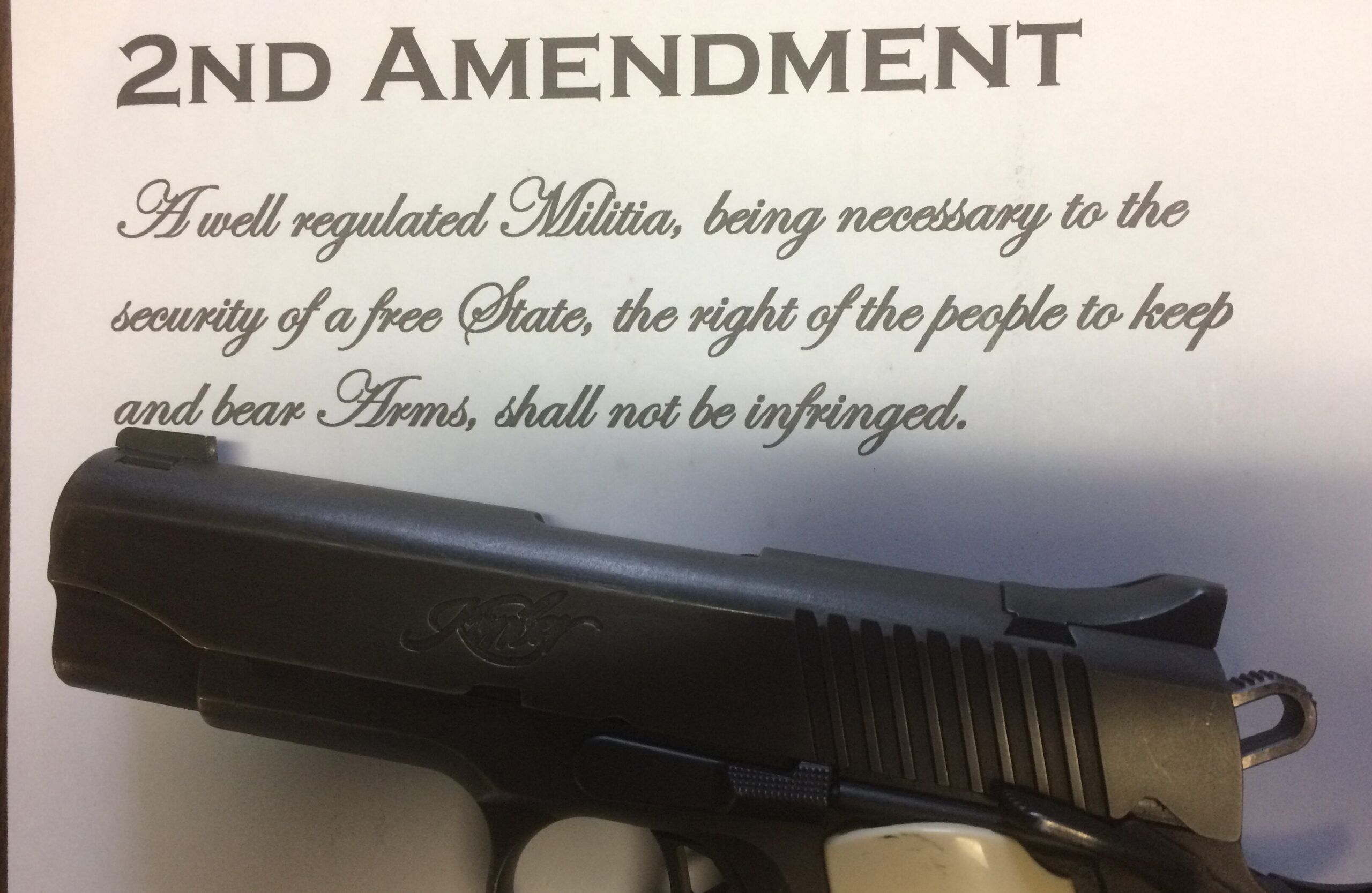
By Dave Workman
Editor-in-Chief
Conspicuous by its nearly total absence in a selection of news reports about California mass shootings, gun control laws and effective prevention has been mention of the roadblock in the room, otherwise known as the Second Amendment.
The Hill mentions in its headline story that New York “seeks to test Supreme Court on gun control.” It’s not the court being “tested.” It’s the Second Amendment.
Over at CNN, the closest their report comes to recognizing the constitutional aspects are in quotes from California Gov. Gavin Newsom and an article by reporter Tierney Sneed.
Newsom: “The Second Amendment is becoming a suicide pact,” he declared.
Sneed (alluding to Justice Clarence Thomas): “Thomas said that the only regulations that can be deemed constitutional are ones (that) don’t encroach on conduct plainly covered by the Second Amendment’s text and that are ‘consistent with this Nation’s historical tradition’ – meaning they have a parallel in the type of regulations in place at the time of the Constitution’s framing,” Sneed wrote.
There are references to last summer’s Supreme Court ruling in New York State Rifle & Pistol Association v. Bruen, but there does not appear to be much, if any, recognition that the Second Amendment—a critical tenet of the Bill of Rights—stands in the way of national disarmament.
While various people speak either in news reports or on social media about how much different the gun laws are in other countries, rarely is it mentioned that the United States is different. Nowhere else on the planet has a Constitution—the foundation of this republic—recognizing right up front that the “right of the people to keep and bear arms shall not be infringed.”
Even today, almost 15 years after the 2008 Heller ruling and nearly 13 years after the 2010 McDonald ruling both held the Second Amendment to be protective of—rather than “granting”—an individual right to be armed, gun control proponents cannot bring themselves to acknowledge this fact. The Bruen decision did not expand that right, but only further restored its original intent, that the right to bear arms extended beyond the front door of one’s home.
The New York Times’ latest piece on the California mayhem accurately notes in the first paragraph, “California has some of the most stringent gun laws in the country, including various bans on assault-style weapons and other measures meant to keep firearms out of the hands of people who might use them to harm themselves or others.”
A few lines later, the Times article states, “Gun policy experts said that a national culture that accepts routine violence, combined with an inability to enforce gun controls in one state that is surrounded by others where rules are more lax, means that California will continue to grapple with public mass violence.”
This inability to enforce restrictive gun laws boils down to the collision between those laws and the constitution, the same document that protects the rights of free speech, freedom of the press, religion, privacy, access to legal counsel when accused of a crime, and the right to remain silent, among other individual rights.
Public officials such as Newsom and other restrictive gun control proponents are frustrated that they cannot advance their agenda because the constitution gets in the way. Rather than admit it, they couch their argument like Newsom did, telling a reporter that the problem of mass shootings only exists in the United States, a position that is demonstrably untrue. Remember Norway in 2011? Germany in 2015?
To the chagrin of the gun ban lobby, it is the constitution, and not just the Second Amendment, that is providing the launch pad for so many legal challenges of existing gun laws. The Second Amendment Foundation, National Rifle Association, Firearms Policy Coalition, Gun Owners of America, National Shooting Sports Foundation, Citizens Committee for the Right to Keep and Bear Arms, National Association for Gun Rights and local groups including the Illinois State Rifle Association, New York State Rifle & Pistol Association, the Association of New Jersey Rifle and Pistol Clubs, Florida Carry, Inc., Oregon Firearms Federation and Massachusetts Gun Owners Action League are on the front lines of this battle, and they bring in the 14th Amendment in some of those cases, along with the First Amendment.
The common thread in all of their legal endeavors is that this is not about guns, it’s about rights.
This appears to be the point nobody in the media is getting, or reporters intentionally overlook. Rights get lip service from the gun control lobby and their political allies.
The oft-repeated claim that “nobody is coming after your guns” typically precedes the introduction of legislation seeking to ban a whole class of firearms or impose some other restriction on law abiding gun owners.
In its report, The Hill quoted George Mocsary, a law professor at the University of Wyoming, who observed that some of the “sensitive places” where New York’s new gun law identified, may be permissible but other such designations could be “in serious trouble because they’re really egregious.”
“The goal of the law isn’t public safety,” Mocsary told The Hill, “it’s to make this list of sensitive places that’s so vast that you can’t go to any destination. All you can practically do is leave your home, spend time on the streets and go back home.”
Perhaps nothing could more clearly define the issue than Mocsary’s observation. Gun prohibitionists may condescendingly refer to Second Amendment rights, but they really do not want anyone to exercise those rights. On the other side, gun rights groups acknowledge the criminal element abuses the right to keep and bear arms, but argue that honest gun owners should not be penalized for violent crimes they didn’t commit.
Ultimately, anti-gunners must face the indisputable truth that gun owners have rights, too. While they may not express or define those rights eloquently, they will defend them vigorously. Their activism will only increase exponentially as threats to those rights continue.



